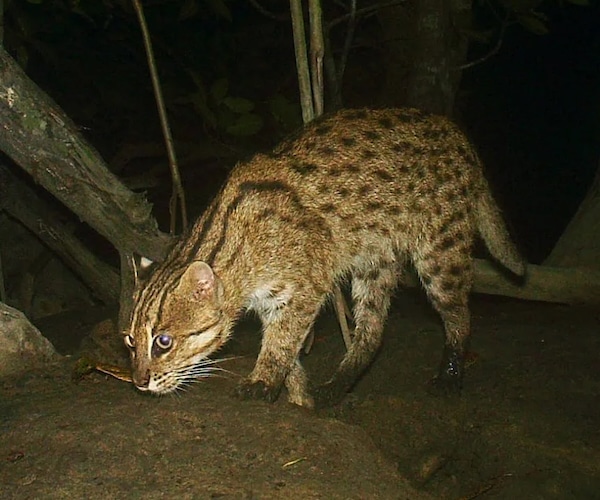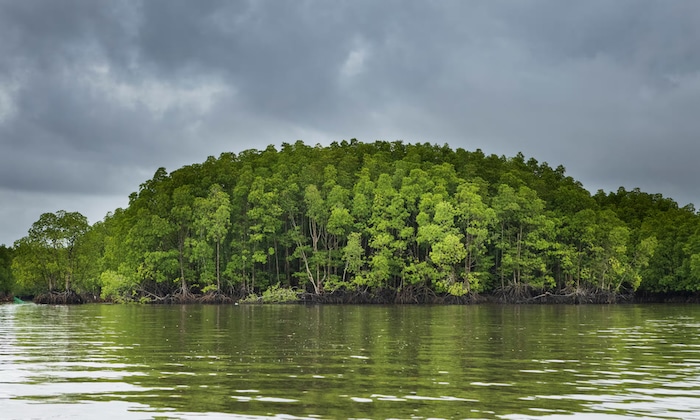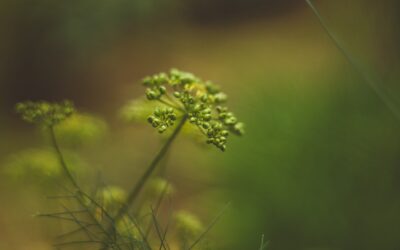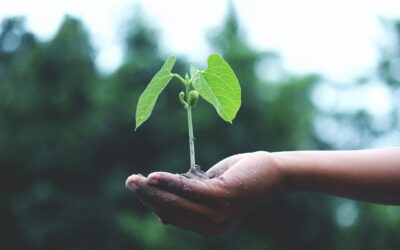This post was originally published on Eco Watch
In one of the most detailed surveys ever undertaken, hundreds of animal species — from birds to primates to web-footed wildcats — have been discovered in a Cambodian mangrove forest.
Team leader Stefanie Rog — a conservation biologist and senior program manager with Fauna & Flora International, which funded the study — recorded an astounding variety of species at the Peam Krasop sanctuary and adjacent Koh Kapid Ramsar wildlife reserve in Cambodia. Some of the animals they encountered included the critically endangered Sunda pangolin; endangered long-tailed macaques, large-spotted civet and hairy-nosed otters; the vulnerable fishing cat; and 74 fish species, a press release from Fauna & Flora said.
“We found 700 different species in these mangrove forests but we suspect we have not even scratched the surface,” Rog said, as The Guardian reported. “If we could look at the area in even greater depth we would find 10 times more, I am sure.”
The Peam Krasop mangrove forest. FFI R5 / Steph Baker / Fauna & Flora
Mangrove forests are found in tropical and subtropical coastal areas. They are specially adapted to flourish in both salt and brackish water, but 40 percent of them have been decimated in the past few decades due to land use changes such as agriculture and development.
Mangroves provide a variety of ecosystem services, such as acting as fish nurseries and reducing the impact of storm surges and the resulting damage to coastlines.
“We found young barracudas, snappers and groupers in the waters here,” Rog said, as reported by The Guardian. “They are clearly important breeding places for fish and provide local communities with food as well as providing stock for commercial fisheries.”
The survey was led by Fishing Cat Ecological Enterprise and Fauna & Flora, along with the Royal University of Agriculture’s faculty of fisheries and aquaculture and the Ministry of Environment.
The survey team conducted their field research during the dry and wet seasons of 2023. They set 57 camera traps across the protected area over 4,000 trap nights, the report said.
The experts also carried out targeted surveys that focused on reptiles, bats, amphibians, juvenile fish, invertebrates and plants.
“[T]hese results evidence an important array of wildlife in need of protection,” the report said. “Overall, priority should be given to maintaining forest condition and cover within the sanctuary, since the loss of older, larger trees (which typically provide more cavities, hollows and crevices) particularly threatens foliage-roosting species, whereas fragmentation of mature forest stands erodes the connectivity between suitable habitat. Cleared areas of mixed mangrove that have been abandoned should be left to regenerate naturally, as these areas are connected to natural seedling recruitment. Protection and patrolling activities should be conducted regularly in order to make sure that no further disturbance to these areas takes place.”
The rare fishing cat has webbed toes, which the large feline uses to swim through waters surrounding the mangroves, from which they hunt for fish and rats.

A fishing cat in the Peam Krasop wildlife sanctuary. Fauna & Flora / FCEE
“It’s very rare to see a fishing cat and we have only found out that they are in the forest from the photographs taken by our camera traps,” Rog said, as The Guardian reported. “Mangroves are places of roots and mud and they are difficult for humans to get into, which is why they provide precious sanctuaries for these vulnerable animals.”
The survey found 150 bird species, 15 of which are on the International Union for Conservation of Nature’s Red List as near-threatened or endangered.
“A mangrove forest relies on all the interconnected relationships between species and if you start taking away some of those species, then slowly you will lose the functioning of the forest,” Rog said, as reported by The Guardian. “[Mangrove forests] are so much more than just an ecosystem that provides a carbon-saving service or coastal protection. They are actually beautiful in their own right. For me, there is no better feeling than to be in this unique, mythical forest, knowing there is still so much more to explore – that there is another world waiting for further discovery.”
The researchers said calling attention to some of the incredible diversity of species who live in this watery wonderland can help support conservation and future investigation of a uniquely rich ecosystem.
“The results provided in this report, while an incomplete picture of the area’s biodiversity, highlight the conservation value of the Peam Krasop/Koh Kapik mangrove forests, and can serve to underpin stronger management of the area, as well as inform initiatives such as eco-tourism and further research,” the report said.
The post More Than 700 Wildlife Species Discovered in Cambodian Mangrove Forest appeared first on EcoWatch.




0 Comments